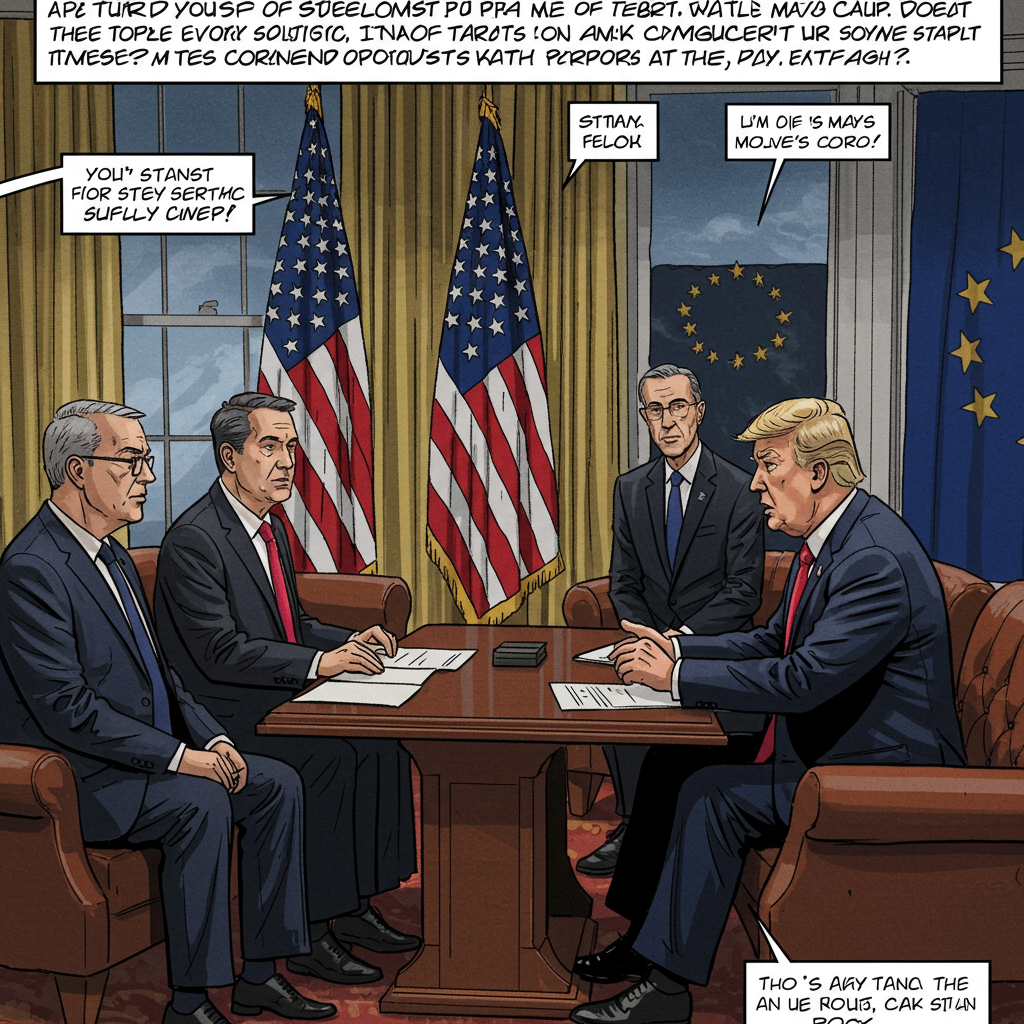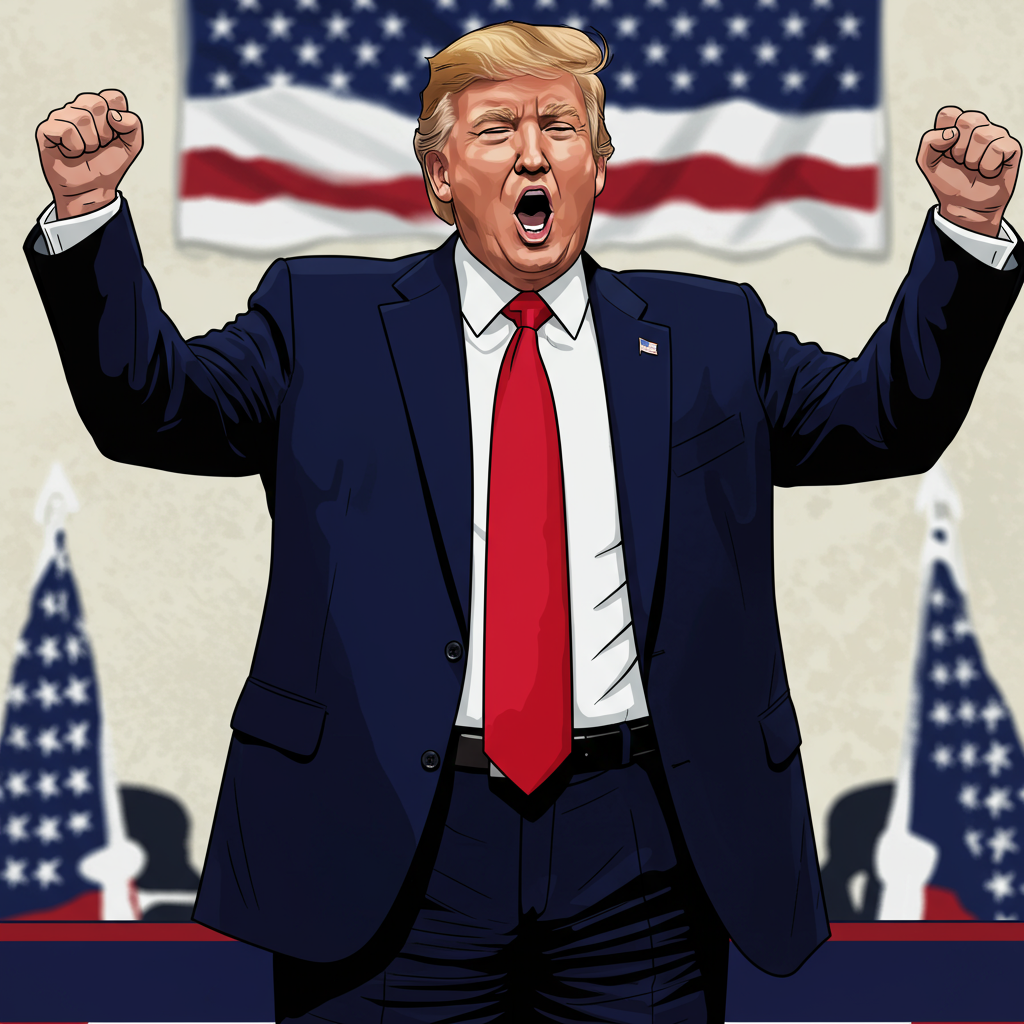Optimism is rising for a significant trade breakthrough between the European Union and the United States. Officials on both sides indicate that a deal could be struck in the coming days. This potential agreement aims to prevent substantial import taxes threatened by US President Donald Trump on European goods.
The looming deadline for these tariffs is August 1. While the initial implementation date was July 9, President Trump extended the timeline to allow for further negotiations. The EU-US tariff deal represents a critical point in relations between the two major economic powers. The EU is the US’s single largest trading partner, making the outcome of these talks hugely impactful.
EU Officials Express Confidence
Leading figures within the European Union have publicly voiced their hope for a swift resolution. Olof Gill, a spokesperson for the European Commission, stated recently that the “outlines” of a tariff agreement appeared close. He added, “We aim to reach a deal before [August 1], potentially even in the coming days.”
Another key figure, EU trade chief Maros Sefcovic, echoed this sentiment. He noted that good progress had been achieved on establishing a framework agreement. Securing a deal now, he suggested, hinges on the willingness of both parties to find mutually acceptable terms. The EU has also affirmed its preparedness to enact counter-tariffs should the negotiations fail and US duties be imposed. This readiness underscores the bloc’s commitment to defending its economic interests.
Signals from Washington
The United States has also sent positive signals regarding the ongoing trade negotiations. President Trump himself offered praise for the European bloc. He indicated the White House was “probably two days off” from finalizing a new tariff rate specifically for the EU.
Further confirmation of progress came from US Commerce Secretary Howard Lutnick. He informed broadcaster CNBC that the EU had presented “significant, real offers.” These offers, he explained, would make it easier for American farmers to sell their goods within the European region. Such market access for US agriculture has been a consistent point of emphasis for the Trump administration in trade talks.
Complexity and Broader Tariff Landscape
Despite the official expressions of optimism, the path to an agreement is not without challenges. Italy’s Economy Minister, Giancarlo Giorgetti, offered a more cautious assessment. He described the talks as “very complicated.” Giorgetti suggested the negotiations could potentially continue right up until the August 1 deadline. This highlights the intricate nature of resolving long-standing trade disputes between major economies.
The specific US EU tariffs threatened by the White House have varied. Initially announced at 20% on European goods in April, President Trump later escalated the threat, suggesting duties could reach as high as 50%. While the focus is currently on avoiding these specific levies on EU products, the Trump administration’s use of import taxes is part of a broader strategy.
Widespread Tariff Threats
The European Union is not the only target of recent US tariff actions. President Trump has warned numerous other trading partners about impending duties. Letters were sent to 14 countries. These included key strategic allies like Japan and South Korea, as well as nations such as the Philippines, Iraq, and Moldova.
These letters outlined planned tariffs ranging from 25% to 40% set to begin on August 1. This demonstrates the widespread nature of the global trade war rhetoric employed by the administration. Beyond broad categories of goods, specific sectors have also faced threats. President Trump has separately announced plans for a 50% tariff on imported copper and indicated potential duties on pharmaceuticals and semiconductors in the near future.
Economic Stakes and Market Reactions
Analysts warn that imposing high tariffs on the EU carries significant risks for the US economy. Given the critical nature of the trade relations between the two entities – amounting to a massive €1.6 trillion in goods and services traded in 2023, representing the world’s largest trading link – disrupting this flow could have severe consequences. Economists broadly agree that these tariffs can lead to increased prices for consumers within the US and a reduction in overall international trade volumes.
Data from groups like the Yale Budget Lab suggests that US consumers are facing an increasingly high effective tariff rate, estimated at 17.6% – the highest in nine decades. While the administration, led by Treasury Secretary Scott Bessent, points to substantial revenue collected ($100 billion so far, with potential for $300 billion), critics label it a “failed trade war.” Massachusetts Governor Maura Healey, for instance, argues the tariffs hurt businesses and raise consumer costs, contrary to stated goals.
Despite the ongoing threats and complex negotiations, financial markets have shown a relatively muted reaction. European markets saw slight gains in early trading recently, while UK and US markets opened flat. Analysts expressed surprise at this calm. Dan Coatsworth of AJ Bell suggested markets might be “shrugging it off.”
Some experts believe investors perceive President Trump’s negotiating tactics as having less credibility over time. His “bark is worse than his bite,” according to one analyst. Investors who were reportedly in “panic mode” after earlier, sweeping tariff announcements seem to have shifted to a “wait and see mode.” This skepticism has even led some analysts to coin the term ‘TACO’ trading – “Trump always chickens out” – reflecting doubts about the likelihood of the most severe threats being fully implemented.
What Might a Deal Entail?
While details remain fluid, potential components of an EU-US tariff deal are emerging. US officials have highlighted offers from the EU related to opening markets for American agricultural products. This aligns with a key priority for the US side. European Commission President Ursula von der Leyen suggested any initial deal might serve as a “reliable framework.” This framework would then allow for continued discussions to build common trade relations.
There has also been speculation about a potential deal structure resembling the agreement recently struck between the UK and the US. That deal reportedly involved reducing most tariffs to around 10% with specific exemptions. While EU officials previously favored a more ambitious “zero for zero” tariff elimination, this outcome appears less likely now. Reaching a mutually acceptable outcome will require compromise from both Washington and Brussels, balancing domestic economic pressures with the vast importance of the transatlantic trade relationship.
Frequently Asked Questions
What is the current status of EU-US tariff negotiations?
Negotiations are ongoing with officials expressing cautious optimism. The European Union hopes to finalize an agreement in the coming days. Both EU and US representatives have indicated progress, with the EU reportedly making “significant offers.” However, the talks are described as “very complicated,” and a resolution might not be reached until the August 1 deadline.
Why is reaching an EU-US tariff deal important?
Reaching a deal is crucial to avoid the imposition of potentially high US import taxes on European goods. Such tariffs could significantly disrupt trade between the two largest economic partners globally (€1.6 trillion in 2023). Economists warn tariffs can harm both economies, leading to higher consumer prices and reduced trade volumes, while proponents argue they protect domestic industry and generate revenue.
What happens if the EU and US don’t reach a tariff agreement by August 1?
If an agreement is not reached by the August 1 deadline, the United States could proceed with implementing the tariffs President Trump has threatened on EU imports. These tariffs could be as high as 50% on certain European goods. Should this occur, the European Union has stated it is prepared to retaliate by imposing billions of dollars worth of counter-tariffs on US products.
Conclusion
The coming days are critical for transatlantic trade. The EU and the US stand at a crossroads. While optimism is high among some officials that an EU US tariff deal is within reach before the August 1 deadline, the complex nature of the discussions means uncertainty remains. The potential agreement aims to prevent disruptive import taxes that could negatively impact the vast economic relationship. Both sides appear engaged, with the EU offering market access and preparing for all outcomes, including retaliation. The outcome will significantly shape the future of trade relations between the world’s two largest economies.
Word Count Check: 1110



